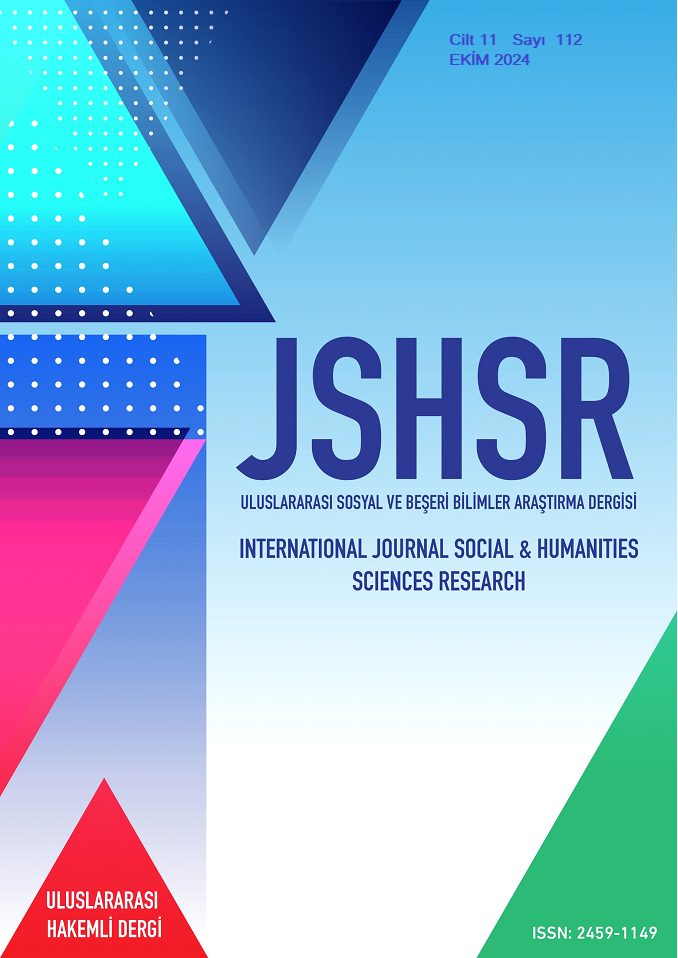Sivas – Yıldızeli Pamukpınar Village Institute Campus
DOI:
https://doi.org/10.5281/zenodo.14020372Keywords:
Republic of Turkey, Sivas, education, Village instituteAbstract
The appointment of Hasan Ali Yücel as the Minister of Education in 1938 was one of the important turning points in the history of education in the Republic period. One of the most fundamental reasons for this is the Village Institutes, the foundations of which were laid during the Atatürk period and which were able to be realized during the İnönü period. There are 21 Village Institute campuses in Turkey, which constitute an education network that reaches every part of the country. Pamukpınar Village Institute, which was built in the rural area of Yıldızeli district in Sivas and started education in 1943, is one of the Village Institutes implemented throughout the country within the framework of the "revitalization" policy of the period. Pamukpınar Village Institute, which had an area of influence in the triangle of Sivas, Erzincan and Tunceli during the period it was built, undertook the "development in education" mission of the period in these regions. Pamukpınar Village Institute is an educational complex that completed the construction process, which included students and instructors, with easy, quick and financially more modest choices using local materials and construction techniques. The aim of the research is to determine the architectural features of the buildings belonging to the Sivas-Pamukpınar Village Institute and to reveal their place in the "educational architecture" of the period. Qualitative methods were used in the research and a literature review was conducted. The research data were obtained by examining national and international articles, books, internet sources, visual sources and works related to the subject.
References
Aladağ, A. (2019). Conservation of Village İnstitutes as a Heritage of Early Republican Period: İvriz Village İnstitute [Yayımlanmamış Yüksek Lisans Tezi]. (612638), Fen Bilimleri Enstitüsü, Orta Doğu Teknik Üniversitesi.
Altunya, N. (2014). Köy Enstitüleri Sistemi Toplu Bakış. Ankara Cumhuriyet Kitapları.
Altunya, N. (2012). Köy Enstitüsü Sistemi'ne Genel Bir Bakış. Ekrem Işın. (Ed.), Düşünen Tohum, Konuşan Toprak-Cumhuriyet'in Köy Enstitüleri 1940-1954 I içinde (s. 82-109). İstanbul Araştırmaları Enstitüsü.
Arman, H. (2016). Piramidin Tabanı Köy Enstitüleri ve Tonguç - Anılar I-II. İzmir Yeni Kuşak Köy Enstitüler Derneği Yayınları.
Çetin, S. & Kahya, A. (2017). Kırda Bir Modernleşme Projesi Olarak Köy Enstitüleri. METU JFA, 34/(1). 133-162.
Çetin, S. & Kıran, G. (2019). Ortaklar Köy Enstitüsünde Modern Mimarlığın İzleri. Journal of Arts, 2/(3). 169-180.
Çorakbaş, F. K. & Yeşiltepe, A. D. (2015). Köy Enstitüleri Yerleşkelerinde Eğitim Sistemi Değişikliklerinin Mekansal Yansımaları: Erzurum Pulur Köy Enstitüsü Yerleşkesi. Mimarsinan Güzel Sanatlar Üniversitesi Sosyal Bilimler Enstitüsü Dergisi, 10 (11). 149-165.
Demiriz, A. (2019). Cumhuriyet Mimarlığının Uluslararası Dönemi:1940-1970 [Yayımlanmamış Yüksek Lisans Tezi]. (546337), Sosyal Bilimler Enstitüsü, Mimarsinan Güzel Sanatlar Üniversitesi.
Ilgaz, D. (1999). Köy Enstitüleri. Fatma Gök (Ed.), 75 Yılda Eğitim içinde (s. 311-344). Tarih Vakfı Yayınları.
Keskin, Y. (2012). Köy Enstitüleri için Açılan Mimari Proje Yarışması ve Sonrası. Ekrem Işın. (Ed.), Düşünen Tohum, Konuşan Toprak-Cumhuriyet'in Köy Enstitüleri 1940-1954 I içinde (s. 110-135). İstanbul Araştırmaları Enstitüsü.
Kirby, F. (1962) Türkiye’de Köy Enstitüleri. İmece Yayınları.
Koşar, E. (2018). Mavi Anadoluculuk ve Sabahattin Eyüboğlu'na Eleştirel Bakışlar. Dil ve Edebiyat Araştırmaları, (17). 79-86.
Özdemir, A. (2017). Malatya Akçadağ Köy Enstitüsü Koruma ve Kullanım Durumu [Yayımlanmamış Yüksek Lisans Tezi]. (470099), Fen Bilimleri Enstitüsü, Dicle Üniversitesi.
Türkoğlu, P. (1997). Tonguç ve Enstitüleri. Yapı Kredi Yayınları.
Downloads
Published
How to Cite
Issue
Section
License
Copyright (c) 2024 INTERNATIONAL JOURNAL OF SOCIAL HUMANITIES SCIENCES RESEARCH

This work is licensed under a Creative Commons Attribution 4.0 International License.


